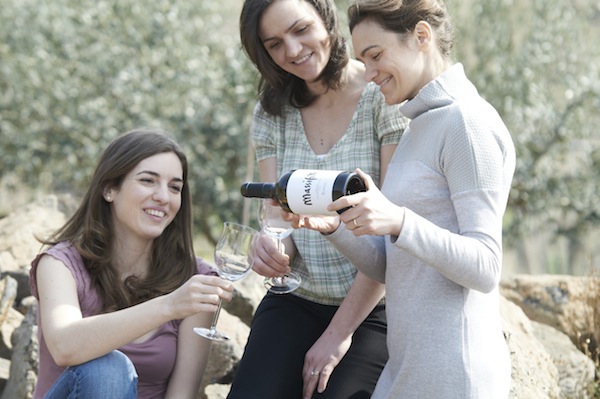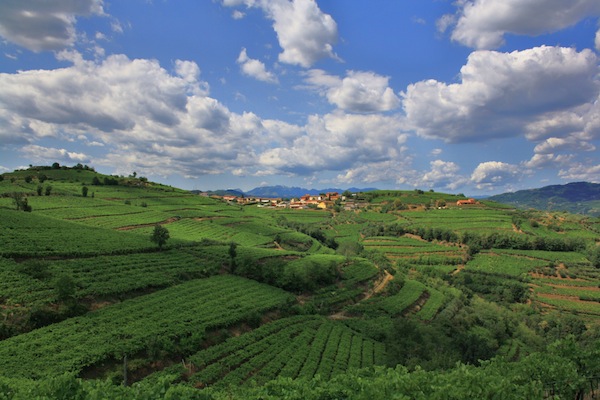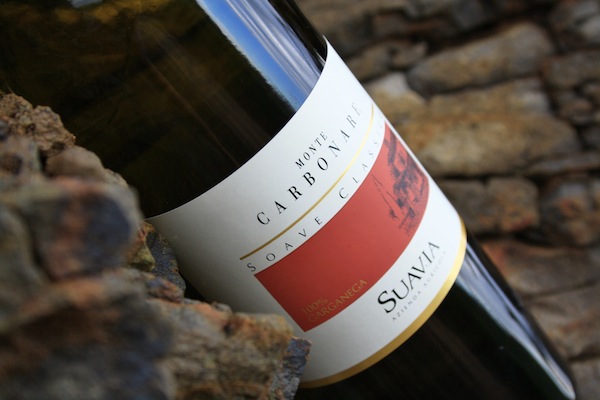“When people visit Soave Classico for the first time they always say things like ‘I didn’t realize how beautiful it is here’,” said winery owner Meri Tessari, as we took the ten minute drive up the hill from the Medieval walled town of Soave to the tiny hamlet of Fittá, where the Suavia winery is located. We were in the north of Italy, about halfway between Venice and Lake Garda. Here, Meri and her sisters Valentina and Alessandra manage the family property, whose 15 hectares are all planted on the steep hillsides around the Tessari family home, and which produces around 130,000 bottles annually. These women are part of a movement that is re-establishing Soave as a quality white wine.
Soave Classico, in the Province of Verona, is the tiny historic zone of production. It is limited to a few hillsides around the communities of Soave and Monteforte d’Alpone. Vineyards in these parts are planted at around 250 meters (820 feet) above sea level on rocky soils of volcanic origin, which are often rich in potassium and phosphorous.
Generally speaking Soave is made mainly (or sometimes solely) from the indigenous garganega grape. The Romans brought this variety from Greece. Though planted in other locations, it is especially in the Soave Classico zone that it really thrives. When it is grown in the right site, when viticultural techniques are tailored to the variety and when attention is paid to clonal selection, garganega is capable of producing firmly structured, long-lived white wines that have precise, concentrated perfumes and flavors. On the nose and palate, one finds hints of pineapple and other exotic fruits, as well as the softer elements of ripe pears and almonds. Wines like these are capable of standing alongside the finest whites from anywhere in the world.
The Suavia winery is among a growing number of producers in the zone who are aiming for elegance and structure, while maintaining the fresh, fruity character of the wine. To do this they are picking their grapes earlier in order to retain garganega’s zesty acidity and floral fragrances. Only one of the Suavia wines, Le Rive, a late harvest dessert wine, sees any time in wood. The rest are vinified in stainless steel. Again, this is done to showcase the variety and the unique volcanic terroir of the Classico zone.
“We just got the email this morning telling us that our Soave Classico Monte Carbonare (a single-vineyard selection) has just won Tre Bicchieri (Three Glasses) from the 2013 Gambero Rosso Guide,” Meri told me that day. This is not the first time that Suavia wines have achieved this prestigious award, and they frequently earn 90-plus scores from Wine Enthusiast and Wine Spectator.
We tasted the 2011 Monte Carbonare together. It was like inhaling fresh, ripe pears. On the palate it was an elegant, spinning-top of flavors: lemon verbena, pears and the zesty minerality that is a hallmark of wines grown in this area.
One of the elements that contribute to making these wines complex is the fact that most of the Suavia vines are over 40 years old. That means they have a root system that digs deep into the volcanic soils.
Another factor is the producers themselves. “Other wineries in the zone have branched out into the production of red wines,” said Meri. “But we specialize in white wine. Our future plans are not to enlarge our range but to deepen our knowledge of our two indigenous varieties – garganega and trebbiano di Soave. To get closer to perfection – if that’s possible.”
“At the beginning we looked for body and alcohol,” added Valentina Tessari, the winemaker. “But in the last ten years the wines have evolved to become sleeker and lower in alcohol. Our aim now is to maintain the elegance of our wines.”
The future of Soave is, to a degree, in the hands of the consumer, for as a wine importer once told me: “to make good wines you must have good customers.” That is to say, customers who know how to recognize quality and support those who provide it. So the next time you find yourself in the mood for a Chardonnay or Sauvignon Blanc, consider reaching for a good Soave Classico instead.




